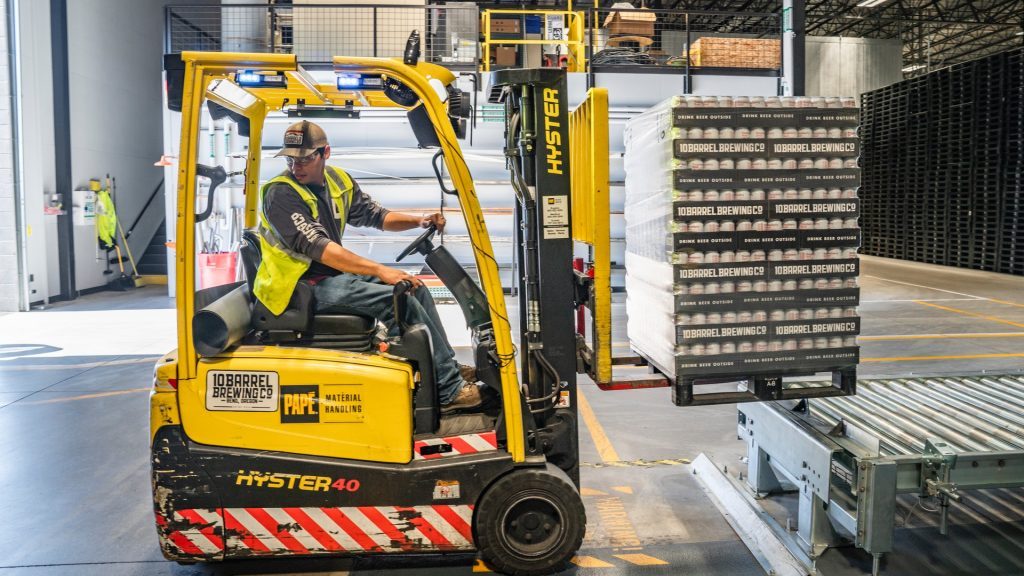The industrial real estate market in the Greater Toronto Area (GTA) is the hottest in North America by a long shot, according to a new report from Colliers International.
In fact, demand is so high that the industrial vacancy rate in the GTA has been driven down to its lowest point ever, outpacing major hubs like New York, Los Angeles, San Francisco and Chicago as large American companies snap up large blocks of space.
The report, All Signs Point North, notes that rental rates in the GTA remain comparably inexpensive, making it attractive to global industrial occupiers and investors, especially those from south of the border.
“U.S. companies are snapping up space,” explains Max Shapinko, market intelligence co-ordinator at Colliers. “American companies such as Amazon, UPS, Kuehne & Nagel, Lowe’s and Walmart have all taken space in the GTA since the beginning of 2018.
“A relatively inexpensive asking net rental rate is also an important component. Another driver is lack of new supply over the last 18 months — in relation to tenant demand heating up.”
The report analyzed the fundamentals of the GTA industrial market, which at more than 806 million square feet is the largest in Canada, and compared it to those in major U.S. cities.
The report found that the industrial vacancy rate in the GTA, which is the fifth largest industrial real estate market in North America, is 0.57 per cent. By comparison, the vacancy rate in Los Angeles is about 2.5 per cent, New York is more than three per cent, San Francisco is roughly 3.5 per cent, and Chicago is more than six per cent.
The GTA’s one- and two-year growth rates were among the highest of all markets. However, the region’s asking net rental rates remain undervalued compared to its U.S. counterparts at $5.49 (U.S.) per square foot, the report indicated, explaining why the GTA industrial market remains attractive to global occupiers.
Toronto has gained more notoriety as a global city, and the GTA as a global market
— Max Shapinko
Colliers International
Foreign companies are taking space in the GTA at a near-two-to-one ratio to domestic companies, according to the report, as the region offers foreign businesses proximity to the U.S. border but also political stability.
“There are many factors that are driving the GTA industrial market,” said Shapinko. “Low availability means there will be an ongoing fight for quality. Rental rates remain comparatively inexpensive to the U.S. markets.
“The proximity to the United States allows for an easier flow of goods that need to cross the border. Real estate is considered a safer investment, as need for land and industrial space will always be there — further driven by the rise of e-commerce and overall tenant demand.”
Shapinko said at one time it was unusual for Toronto to be busier than places like New York, but that has changed.
“Over the last number of years, Toronto has gained more notoriety as a global city, and the GTA as a global market. Most recently, this was evidenced by Toronto being on Amazon’s short list of finalists for the HQ2 space. There’s a reason why foreign companies, not just those in the United States, are looking to come to the GTA.”
According to the report, the demand for large blocks of industrial space in the GTA is set to continue to pick up momentum throughout 2019 and beyond and, driven by strong tenant demand and record low vacancy, the region will solidify its position as one of the top industrial markets in North America.
The report found that the amount of industrial inventory under construction as a percentage of total inventory is just under one per cent in the GTA, the second lowest when compared to major U.S. industrial markets, which means the amount of available space will remain low for some time to come.
Much of the GTA sits on the shoreline of Lake Ontario, the report noted, and it restricts to a degree the areas where the industrial market can expand. The rest of the GTA is also constrained by the Greenbelt, including the Oak Ridges Morain, the Niagara Escarpment and the Rouge River Valley.
Shapinko said for investors the situation means good potential returns on GTA industrial space and for tenants it means that time is of the essence to secure units.
“Potential is high for investors,” he said. “Rental rates are growing at unprecedented levels. The GTA is the largest and most established industrial market in Canada, by a considerable margin. There are a multitude of high-quality, state-of-the-art industrial facilities. A shorter lease-up time means there is less risk involved.”
Tenants, he said, should now be locking in units.
“If they turn down an opportunity to occupy space today, with the GTA’s incredibly low vacancy rate and increasing rental rates, that space will only increase in value going forward. Now is the time to secure their space, in an incredibly competitive market.”
The situation is good economically for the GTA, said Shapinko, because it means land values are high and spaces under construction continue to be pre-leased.
The high demand for industrial space will also have a spillover effect and result in more developments in areas on the perimeter of the GTA such as Durham and Halton regions, he noted, and possibly multi-storey industrial developments.
“Industrial condos are gaining traction in the GTA,” said Shapinko, “and will become much more popular in a few years. While multi-storey industrial facilities are still in their infancy in North America, not just the GTA, the necessity to maximize all available land could lead to an increase in developments of those as well.”











Recent Comments
comments for this post are closed